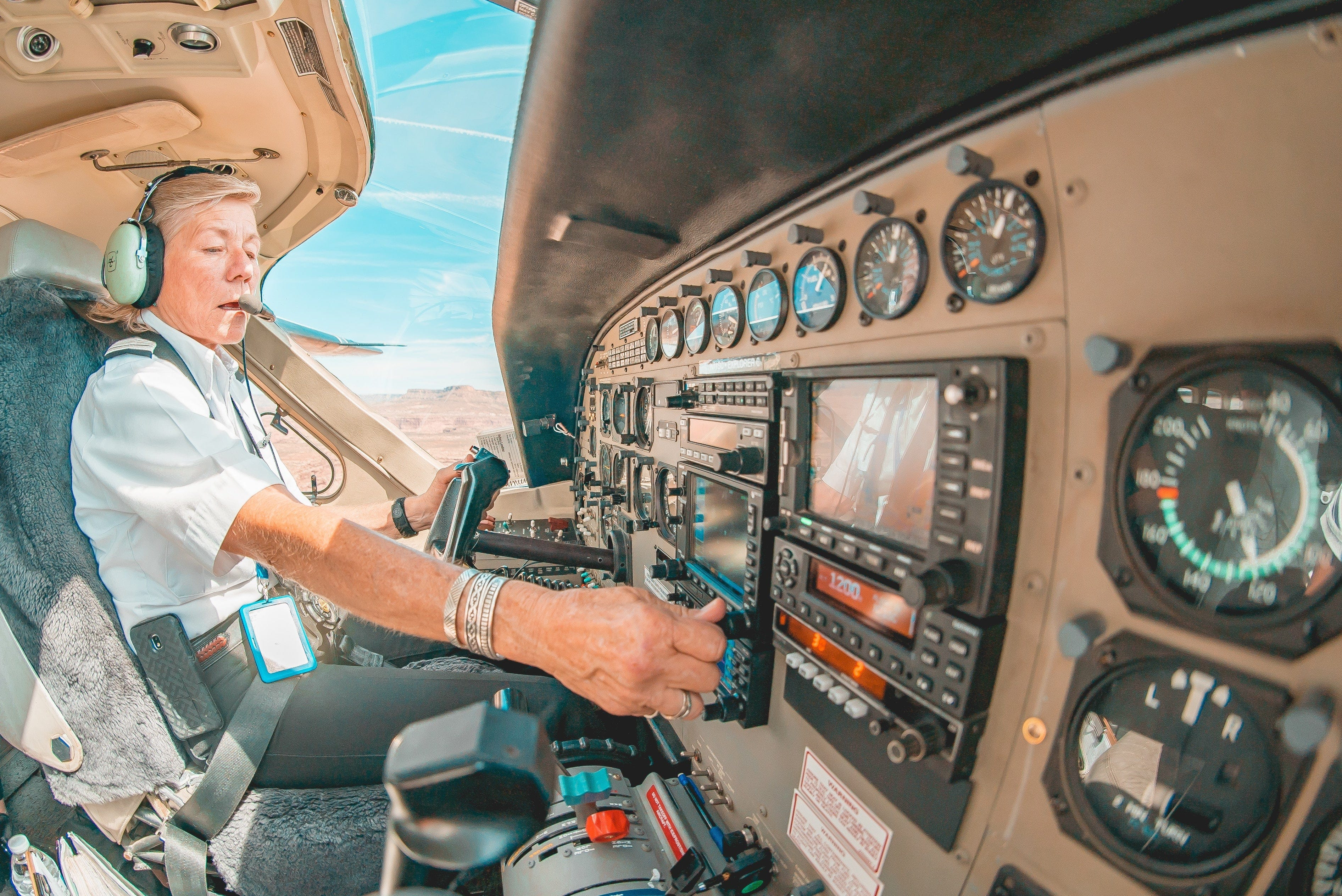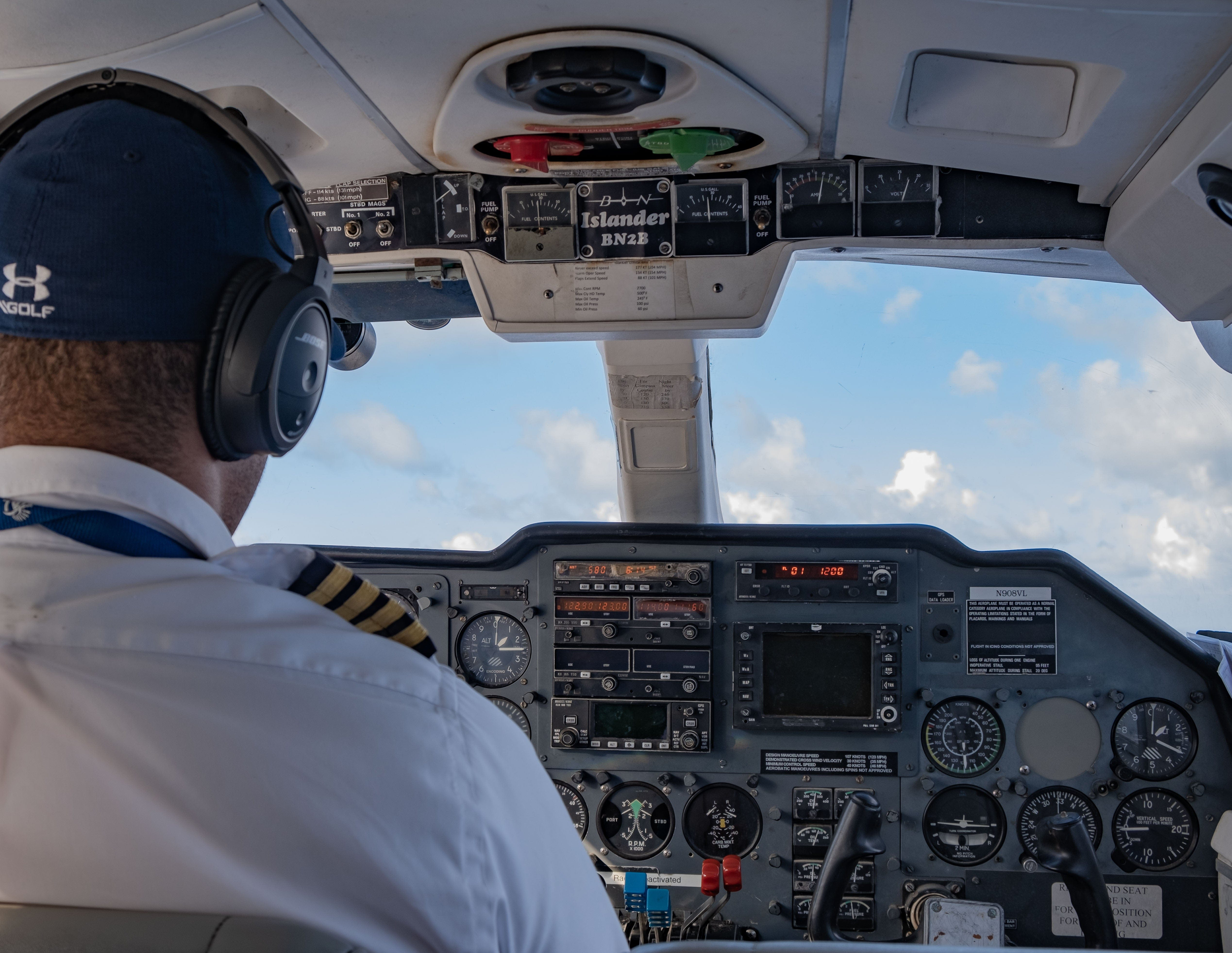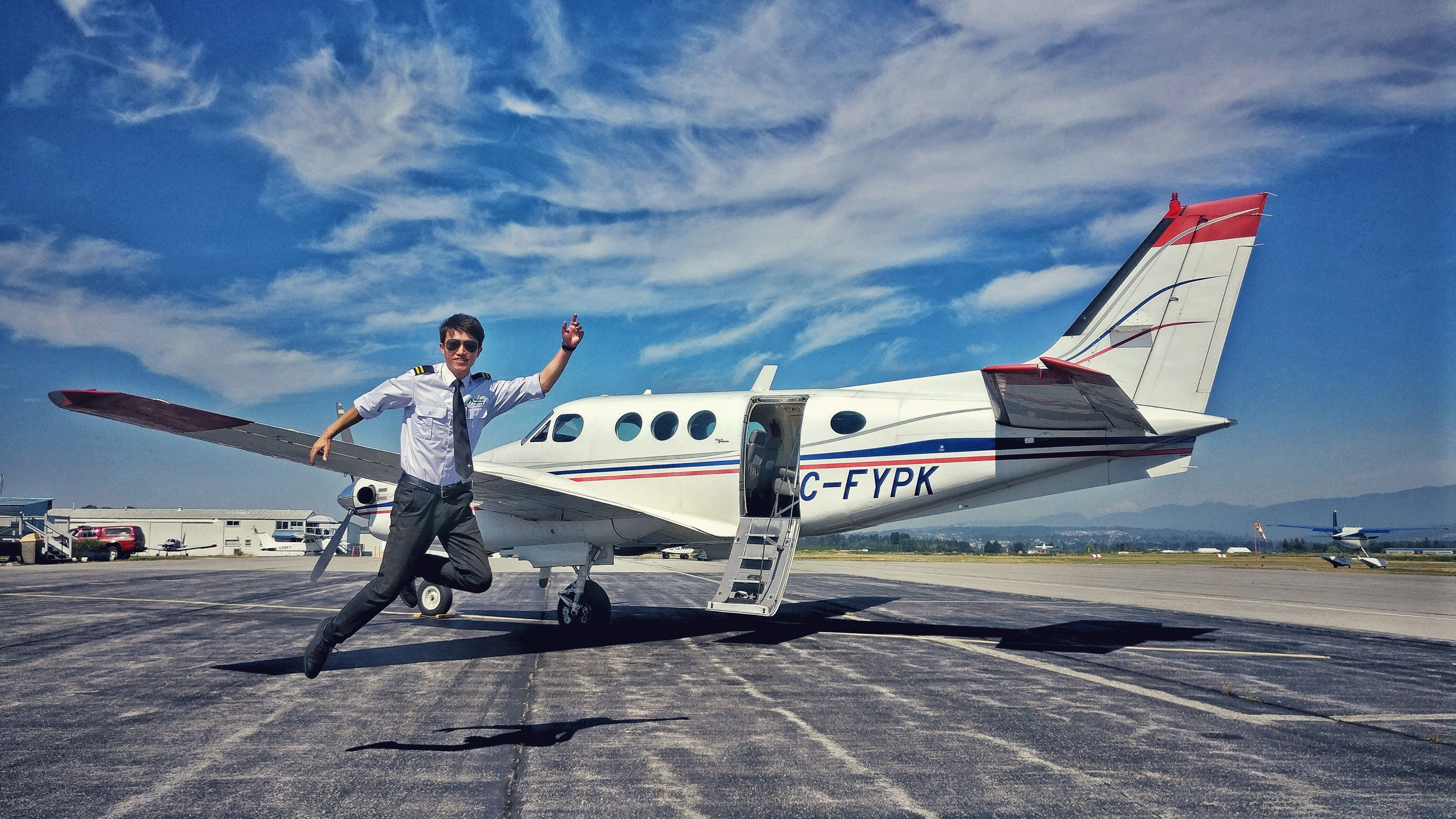How Long Can Pilots Fly In A Day? Pilots can fly up to 8-17 hours a day, depending on several factors. This comprehensive guide from flyermedia.net explores pilot work hour regulations and what a pilot’s day looks like. Learn about the regulations and find the answers to all of your questions regarding a pilot’s work hours. You’ll also learn about the career outlook for airline and commercial pilots, duty time, and rest requirements.
1. What Does a Pilot’s Day Look Like?
A pilot’s day is anything but standard. Unlike jobs with routine tasks, pilot schedules vary widely. They may involve flying to diverse cities and countries across different time zones. Some pilots handle numerous short-day flights, while others manage fewer long flights with layovers.
 The life of a pilot will vary from day to day
The life of a pilot will vary from day to day
The life of a pilot will vary from day to day.
1.1. What Happens During a Typical Day for a Pilot?
Upon arriving at the airport, airline pilots report to their airline and pass through security to reach the designated gate. Once aboard, the pilot meets their co-pilot(s) and flight crew, then focuses on final pre-flight planning and checklists. Once cleared to push back, the flight begins. After landing, a pilot may be done for the day, or they may quickly turn around for a short hop. After a longer flight, pilots usually rest for at least 8-10 hours before returning to the airport.
2. How Many Hours Do Pilots Work in a Month?
It’s important to distinguish between “work” and “fly.” Airline pilots do both. Flight time officially starts when the aircraft is powered up and ends when it’s powered down at the destination. According to the latest U.S. Bureau of Labor Statistics reports, airline pilots average 75 flight hours per month.
 Flight time starts when the aircraft is powered up till the time it is powered down
Flight time starts when the aircraft is powered up till the time it is powered down
Officially, Flight time starts when the aircraft is powered up till the time it is powered down.
2.1. What Are the Legal Limits for Pilot Flight Hours?
The CFRs limit Part 121 pilots to 100 flight hours per calendar month and 30 hours in any seven consecutive days. On top of flight time, pilots spend an average of another 150 hours of duty time doing flight planning, weather checks, and preparations, totaling 225 hours of work per month. Flying Mag estimates airline pilots average 85 flight hours and 80 ground hours monthly. Part 135 commercial pilots can log up to 120 flight hours monthly and 34 hours in 7 consecutive days.
3. How Long Are Pilots’ Shifts?
Pilot duty shifts include both duty time and flight time. The FAA sets different limits for each. Total duty shift duration is between nine and 14 hours for single pilots, or 13 to 19 hours with two or more pilots. Maximum flight time ranges from eight to 17 hours, depending on the start time and the number of pilots.
3.1. What Else Do Pilots Do During Their Shifts?
Pilots spend many additional hours on non-flight duties, such as weather checks and planning. These responsibilities ensure flight safety and operational efficiency.
4. How Many Hours a Day Do Pilots Work?
Flight time is included in total duty time, meaning pilots can work up to 19 hours a day. Regulations require at least an 8- to 10-hour rest break between shifts. The 30-hour flight time limit per seven consecutive days ensures pilots don’t work back-to-back extended duty shifts.
4.1. What Are the FAA Regulations on Pilot Work Hours?
The FAA has strict regulations to prevent pilot fatigue, enhancing flight safety. These regulations cover maximum flight hours, duty periods, and required rest periods.
5. How Many Hours Do Pilots Work a Year?
FAA CFRs cap Part 121 pilots’ flight time at 1,000 hours per calendar year to reduce pilot fatigue. Based on the Bureau of Labor Statistics’ average flight hour reports, most ATP pilots fly roughly 900 hours a year. Part 135 commercial pilots have an annual flight hour cap of 1,200 hours.
5.1. Why Is Tracking Flight Hours Important for Pilots?
Keeping track of hours worked is crucial. Many pilots use digital logbooks and maintain a backup physical logbook. This helps them stay within legal limits and manage their schedules effectively.
6. Do Pilots Get Weekends Off?
Being a commercial or airline pilot isn’t a typical 9-to-5 job. Junior pilots with low seniority should expect to work many weekends and holidays. Enjoy the holidays and weekends you do get off! Flight assignments are seniority-based, so you should have more schedule flexibility later in your career.
6.1. How Does Seniority Affect a Pilot’s Schedule?
Pilots with higher seniority get more flexibility and can choose their preferred days off. This makes work-life balance easier to manage over time.
7. How Are Pilots’ Schedules Assigned?
Most airlines use a seniority-based line bid system to assign flight schedules. The airline creates numbered schedules called “lines.” Pilots rank these schedules based on preference. The highest seniority pilot gets their choice of line, and the process continues down the list.
7.1. What Is a Reserve Pilot?
New junior pilots might be assigned “reserve” duty until they gain enough seniority to hold their own schedule line. Reserve pilots don’t have a set schedule. They fill shifts needed urgently due to weather, mechanical delays, or sick calls.
7.2. What Are the Challenges of Being a Reserve Pilot?
Work-life balance is most challenging for junior pilots flying reserve. Sticking it out leads to seniority and holding a line, which provides more schedule predictability.
8. How Often Are Pilots Home?
 Pilots must enjoy flying as sometimes you may not be home for several nights in a row
Pilots must enjoy flying as sometimes you may not be home for several nights in a row
Pilots must enjoy flying as sometimes you may not be home for several nights in a row.
The frequency pilots are home depends on the job. Regional airline pilots doing out-and-back flights could be home nightly. Long-haul pilots might be gone for three to four days, then home for a few days before another trip.
8.1. What Are the Different Types of Pilot Schedules?
Long-haul pilots get extended time off for working longer shifts, while short-haul pilots might be home every night but have fewer days off.
8.2. What Variables Affect a Pilot’s Schedule?
Corporate and charter pilots often fly a 7-day on, 7-day off schedule. Airline pilots fly an average of 15 or 16 days a month, with schedules varying by airline, often involving a three- or four-day trip followed by three or four days off. With seniority or the ability to trade flights, pilots can lump flying days together for extended time off. Living in an airline’s base city increases home time by avoiding commuting after flights.
9. Do Pilots Have Time for Family?
Being a pilot isn’t the most family-friendly career, but many pilots balance aviation with family life through communication, realistic expectations, flexibility, and patience.
9.1. How Much Time Off Do Pilots Get?
Junior pilots average twelve days off a month, while senior pilots may get up to twenty days off. The average is fifteen.
9.2. What Are the Benefits for Pilots and Their Families?
One upside is access to free and reduced-fare air travel for pilots and immediate family members, allowing for amazing travel adventures during time off.
 Many pilots can take their families to some truly remarkable vacation destinations
Many pilots can take their families to some truly remarkable vacation destinations
Many pilots can take their families to some truly remarkable vacation destinations.
10. What Is the Pilot Retirement Age?
The FAA requires airline pilots to retire by age 65. Some pilots might retire earlier if they develop a disqualifying condition that prevents them from maintaining their FAA medical certificate.
10.1. What Conditions Can Disqualify a Pilot From Flying?
Various medical conditions can prevent a pilot from maintaining their FAA medical certificate, leading to early retirement.
11. How Much Do Pilots Make per Hour?
Pilot pay varies widely based on education, certification, experience, seniority, and airline. As of 2023, salary.com estimates an hourly range of $71 to $108 for airline pilots, with a median hourly pay of $88.
11.1. What Factors Influence a Pilot’s Hourly Wage?
Experience, type of aircraft flown, and the airline’s pay scale significantly affect a pilot’s hourly wage.
12. How Much Do Pilots Make a Year?
According to the U.S. Bureau of Labor Statistics, the median commercial and airline pilot’s salary was $134,630 per year as of 2021. For airline pilots, copilots, and flight engineers, the median salary was $202,180. The lowest 10% of pilots made less than $50,080, while the highest 10% earned over $208,000.
12.1. What Is the Job Outlook for Pilots?
The U.S. Bureau of Labor Statistics predicts a strong 13% growth for airline and commercial pilots between 2020 and 2030.
12.2. Is Being a Pilot Worth It?
The decision to become a pilot depends on individual priorities. The industry outlook is positive, but it requires careful consideration of the lifestyle and demands.
FAQ: Your Questions About Pilot Work Hours Answered
1. What is the maximum number of hours a pilot can fly in a day?
Pilots can fly up to 8-17 hours a day, depending on factors like the number of pilots and the time of day the flight starts, as regulated by the FAA.
2. How many hours can a pilot fly in a month?
Part 121 pilots are limited to 100 flight hours per calendar month, while Part 135 commercial pilots can fly up to 120 hours.
3. What is the annual flight hour limit for pilots?
Part 121 pilots are capped at 1,000 flight hours per calendar year, and Part 135 commercial pilots have a limit of 1,200 hours.
4. How much rest time is required between pilot shifts?
Regulations typically require at least an 8- to 10-hour rest break between shifts to prevent fatigue.
5. Do pilot schedules include weekends and holidays?
Junior pilots often work weekends and holidays, but with seniority, they gain more flexibility to choose their days off.
6. How does seniority affect a pilot’s schedule?
Seniority allows pilots to bid on preferred schedules, leading to more predictable hours and desired days off.
7. What is a reserve pilot, and what are their responsibilities?
A reserve pilot is a backup who fills in for absent pilots on short notice due to various factors like illness or weather delays.
8. How does the type of airline (regional vs. long-haul) affect a pilot’s schedule?
Regional airline pilots often have shorter routes and may be home nightly, while long-haul pilots may be away for several days at a time.
9. What is the mandatory retirement age for airline pilots?
The FAA requires all airline pilots to retire by age 65.
10. What are some strategies for pilots to balance work and family life?
Communication, realistic expectations, flexibility, and taking advantage of travel benefits are key to balancing work and family.
Are you passionate about aviation and eager to learn more about pilot training programs, industry news, and career opportunities? Visit flyermedia.net today to discover a wealth of resources, insightful articles, and expert advice to help you take off in the exciting world of aviation. Contact us at Address: 600 S Clyde Morris Blvd, Daytona Beach, FL 32114, United States or Phone: +1 (386) 226-6000.